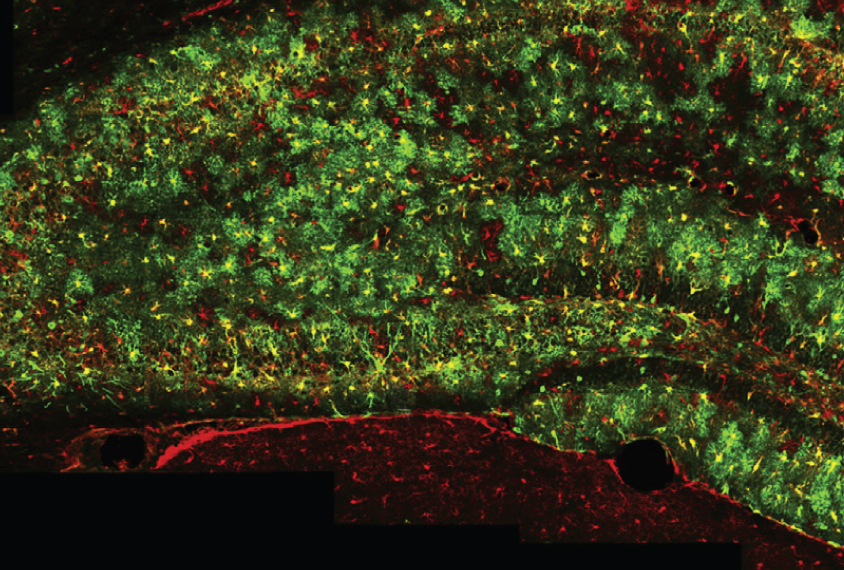
THIS ARTICLE IS MORE THAN FIVE YEARS OLD
This article is more than five years old. Autism research — and science in general — is constantly evolving, so older articles may contain information or theories that have been reevaluated since their original publication date.
Two new strains of mice allow researchers to monitor and manipulate brain cells called astrocytes1. The star-shaped cells, which support neurons and help prune their junctions, or synapses, are implicated in autism.
Scientists have turned specific genes on or off in neurons in mice. They can also track neuronal activity using mice engineered to produce proteins that glow when neurons fire. Together, these mice can illuminate the function of neurons, but reveal little about other types of brain cells.
One of the new strains of mice, described 21 December in Neuron, has an on-off switch ahead of certain genes. The switch is a specific DNA sequence combined with an enzyme called CRE recombinase that the mice have been engineered to express only in astrocytes.
This strain could help scientists study the effects of autism-linked mutations in astrocytes.
For the second mouse strain, detailed in the same paper, researchers engineered the mice to express a protein in astrocytes that fluoresces in the presence of calcium ions. When astrocytes respond to signals from nearby neurons, calcium ions spike inside the cells and light up the protein sensor at the cell surface.
The researchers used this strain to visualize astrocyte activity in living mice. They cut a window through the animals’ skulls so they could see the brain cells, which lit up as the mice reacted to gentle puffs of air in their faces or ran on a small treadmill. By analyzing patterns of astrocyte activity, researchers could deduce how astrocytes coordinate communication between neurons.
By joining the discussion, you agree to our privacy policy.